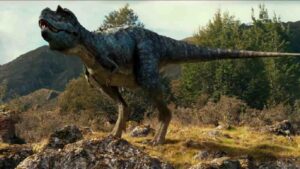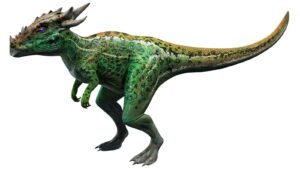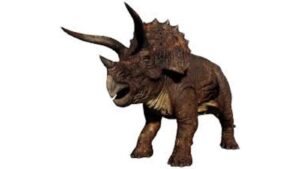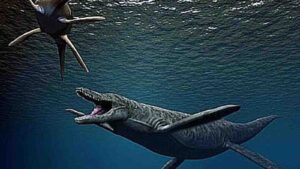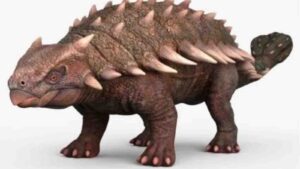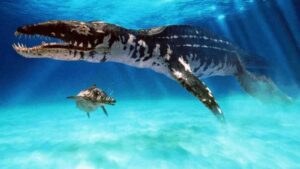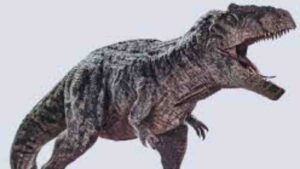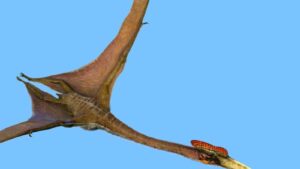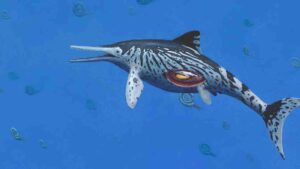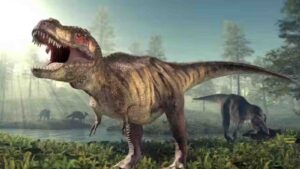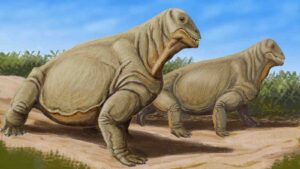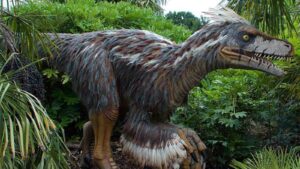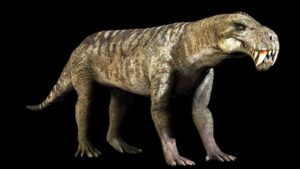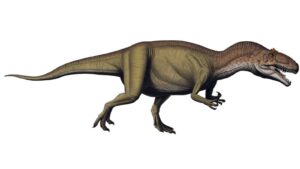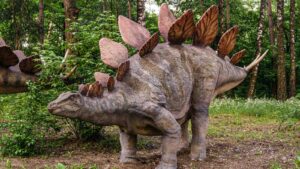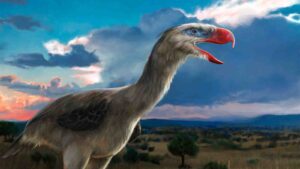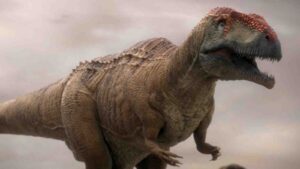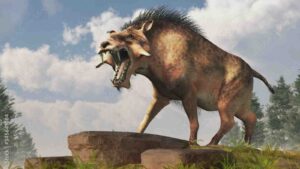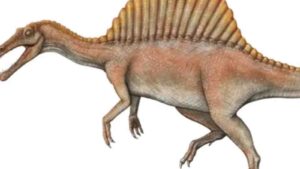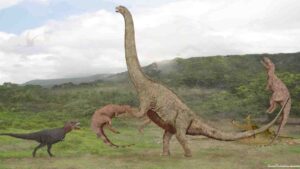Terrifying dinosaurs you’re glad are extinct
Summary
Top 20 terrifying dinosaurs you’re glad are extinct. Dinosaurs went extinct about 65 million years ago after living on Earth for about 165 million years. They lived on all of the continents and died out; nearly 65 million years passed […]

Top 20 terrifying dinosaurs you’re glad are extinct. Dinosaurs went extinct about 65 million years ago after living on Earth for about 165 million years. They lived on all of the continents and died out; nearly 65 million years passed before people appeared on Earth.
If dinosaurs didn’t go extinct, mammals probably would’ve remained in the shadows, as they had been for over a hundred million years. Humans, then, probably would’ve never been here.
We will tell you the salvation stories of some gigantic dinosaurs who lived on this planet.
Here are the top 20 terrifying dinosaurs you’re glad are extinct:
Video: Terrifying dinosaurs you’re glad are extinct
Gorgosaurus:
This terrifying extinct animal lived in western North America during the Late Cretaceous Period, between about 76.6 and 75.1 million years ago. Fossil remains have been found in the Canadian province of Alberta and possibly the U.S. state of Montana.
Gorgosaurus lived in a lush floodplain environment along the edge of an inland sea. It shared its general body plan with all other Tyrannosaurids. Its massive head was perched on the end of an S-shaped neck. In contrast to its large head, its forelimbs were very small.
Dracorex
They are most terrifying for having a large, bony dome atop its skull, up to 25 cm thick, which safely cushioned its tiny brain. The dome’s rear aspect was edged with bony knobs and short bony spikes projected upwards from the snout. The spikes were probably blunt, not sharp.
The skull was short and possessed large, rounded eye sockets that faced forward, suggesting that the animal had good eyesight and was capable of binocular vision. They had a small muzzle, which ended in a pointed beak. The teeth were tiny, with leaf-shaped crowns.
Video: Terrifying dinosaurs you’re glad are extinct
Triceratops:
This terror bird lived in the late Cretaceous period, around 66 to 68 million years ago. The climate was warm and dry, and there were numerous volcanoes.
Bearing a large bony frill and three horns on the skull, and its large, four-legged body possessing similarities with the modern rhinoceros, Triceratops is one of the most recognizable of all dinosaurs and the best-known ceratopsid. It was also one of the largest, up to nine meters long and twelve tons in weight.
Kronosaurus
Body-length estimates, largely based on the 1959 Harvard reconstruction, had previously put the total length of Kronosaurus at 12.8 meters. However, more recent studies comparing fossil specimens of Kronosaurus to other pliosaurs suggest that the Harvard reconstruction may have included too many vertebrae, exaggerating the previous estimate, with the true length probably only 9 to 10.9 meters.
Their teeth exceed 7 centimeters in length and 12 centimeter crowns. However, they lack carinae and the distinct trihedral of Pliosaurus and Liopleurodon teeth.
Ankylosaurus
Possibly the largest-known ankylosaurid, It is estimated to have been between 6 and 8 meters long and to have weighed between 4.8 and 8 tons. It was quadrupedal, with a broad, robust body. It had a wide, low skull, with two horns pointing backward from the back of the head and two horns below these that pointed backward and down.
Unlike other ankylosaurs, its nostrils faced sideways rather than towards the front. The front part of the jaws was covered in a beak, with rows of small, leaf-shaped teeth farther behind it.
Liopleurodon
Despite needing to breathe air, Liopleurodon spent its entire life at sea and was unable to leave the water. Consequently, it would have given birth to its young alive and may have visited shallower water to breed. Until recently, the longest confirmed adult specimen was 18 meters.
Some paleontologists believe that it was rather swift in the water and could possibly swim as fast as a shark, which is about 25 miles per hour. Which is about 5 times faster than the fastest human swimming speed of 5.34 miles per hour.
Giganotosaurus
Today, Giganotosaurus is believed to have been slightly larger than T. rex, though even it ranks behind Spinosaurus in size among the meat-eating dinosaurs. It should not be confused with Gigantosaurus, a lesser-known sauropod discovered in England.
The longest meat-eating dinosaur yet discovered is Giganotosaurus, a 44-46-foot-long behemoth who weighed about 8 tons and stood 12 feet tall. It walked on two legs, had a brain the size of a banana, and had enormous jaws with 8-inch long serrated teeth in a 6-foot long skull.
Read More: Top 20 most unusual pets ever
Quetzalcoatlus
A study by Sankar Chatterjee, a Texas Tech University professor, claims that the Quetzalcoatlus would not have been able to fly. Instead, the pterosaur would soar and glide in a similar fashion as the albatross. Recent studies have estimated Quetzalcoatlus to weigh around 200 to 250 kg.
They are huge, the size of a giraffe or a small plane, and have a beak that is massive, 2.5 meters long. So it’s large enough to eat humans—at least children, teens, and small adults.
Ichthyosaurus
This extinct genus was thought to have become the most terrifying extinct creatures early in the late Cretaceous, during the Cenomanian about 95 million years ago. The ichthyosaurs thus would have disappeared much earlier than other large Mesozoic reptile groups that generally survived until the end of the Cretaceous.
Mary Anning has been credited with the first discovery of ichthyosaur fossils. Although this is not entirely true, she did help to discover the first specimen of Ichthyosaurus to be known by the scientific community of London.
Tyrannosaurus
All of them are large theropod dinosaurs. The fossil record shows incredible diversity when it comes to tyrannosaurs. There were over 9 different Tyrannosaurs, each specialized for a specific time period and environment.
Tyrannosaurus lived throughout what is now western North America, on what was then an island continent known as Laramidia.
Moschops
They were heavily built plant eaters, and they may have lived partly in the water, as hippopotamuses do. They had short, thick heads and might have competed by head-butting each other.
With a versatile palate and tough teeth, Moschops can be tamed for a unique ability: over time it can be accurately taught exactly which things to gnaw, increasing the likelihood of harvesting the specific resource its master desires. Even after taming, it will quickly flee when enemies are nearby.
Survivors can find the Moschops almost anywhere on the island, with the exception of the snow biome, mountain areas, and both carno and herbivore islands.
Utahraptor
At top speed, this extinct animal could probably run up to 20 miles per hour for about 5-10 seconds.
Utahraptor is a genus of large dromaeosaurid theropod dinosaur that lived in North America during the Early Cretaceous period. It was a heavy-built, ground-dwelling, bipedal carnivore. It contains a single species, Utahraptor ostrommaysi, which is the largest-known member of the family Dromaeosauridae.
Gorgonopsid
Gorgonopsid is the most dangerous extinct animal clade of non-mammalian synapsids from the Permian period. Gorgonopsians were quadrupedal predators with prominent canine teeth, and the largest species were the apex predators of their ecosystems. Like other non-mammalian synapsids, gorgonopsians were once described as “mammal-like reptiles” due to their mix of mammalian and reptilian traits.
Allosaurus
This biggest extinct animal was a large bipedal predator. Its skull was large and equipped with dozens of sharp, serrated teeth, which means megadolon. It averaged 9.5 meters in length, though fragmentary remains suggest it could have reached over 12 m. Relative to the large and powerful hindlimbs, its three-fingered forelimbs were small, and the body was balanced by a long and heavily muscled tail. It is classified as an allosaurid, a type of carnosaurian theropod dinosaur.
Stegosaurus
Stegosaurus was a large, plant-eating dinosaur that lived during the late Jurassic Period, about 150.8 million to 155.7 million years ago, primarily in western North America. It has a reputation for having a small brain and one of the lowest brain-to-body ratios among dinosaurs.
It was an herbivore, as its toothless beak and small teeth were not designed to eat flesh, and its jaw was not very flexible. Interestingly, unlike other herbivorous, beaked dinosaurs, Stegosaurus did not have strong jaws and grinding teeth.
Phorusrhacid
This terror bird ranged in height from 1 to 3 m. Most phorusrhacids were very fast runners. All members possessed a large, sharp beak, a powerful neck, and sharp talons. However, even with these attributes, the phorusrhacids are often assumed to have preyed on relatively small animals that could be dispatched with a minimum of struggle. This is due to the fact that with the phorusrhacids’ beak proportions, the jaw could not generate a great deal of bite force with which to kill the prey.
Mapusaurus
Mapusaurus was a large theropod and was roughly similar in size to its close relative Giganotosaurus, with the largest known individuals estimated as about 10.2 meters in length or more and weighing about 3 metric tons.
Mapusaurus appears to be slightly bigger than Giganotosaurus, a close relative. One of its shin bones is longer but also a little thinner, which is why Dr. Currie and his colleagues are careful to say they may have found the biggest meat-eating dinosaur on record. They have only three bones from the largest specimen, but all are bigger than similar bones from Giganotosaurus.
was a giant carnosaurian, Carcharodontosaurid dinosaur from the early Late Cretaceous of what is now Argentina and possibly Chile.
Entelodon
Entelodon was a fairly typical entelodont, with a large, bulky body, slender legs, and a long snout.
Like other entelodonts, Entelodon had complete Eutherian dentition. It had only two toes on each foot, and its legs were built for fast running. Its long, wide head was supported by a robust, short neck, and its cheekbones were greatly enlarged and protruded noticeably from the sides of the head. Though it was more closely related to hippos and whales than pigs, its skull was generally pig-like. It is presumed to have been an omnivore.
Entelodon was around 1.35 meters tall at the shoulders, with a 65-centimeter skull.
Spinosaurus
Spinosaurus is known to have eaten fish, and most scientists believe that it hunted both terrestrial and aquatic prey. Evidence suggests that it was highly semiaquatic and lived both on land and in water, as modern crocodilians do. Spinosaurus’s leg bones had osteosclerosis, allowing for better buoyancy control, and the paddle-like tail was likely used for underwater propulsion. Multiple functions have been put forward for the dorsal sail, including thermoregulation and display, either to intimidate rivals or attract mates. Spinosaurus lived in a humid environment of tidal flats and mangrove forests alongside many other dinosaurs, as well as fish, crocodylomorphs, lizards, turtles, pterosaurs, and plesiosaurs.
Read More: 20 Most Insane Banned Water slides You Can’t Go On Anymore
Argentinosaurus
Argentinosaurus is among the largest known land animals, although its exact size is difficult to estimate due to the incompleteness of its remains. To counter this problem, paleontologists can compare the known material to that of related sauropods known from more complete remains. The more complete taxon can then be scaled up to match the dimensions of Argentinosaurus. Mass can be estimated from known relationships between certain bone measurements and body mass or through determining the volume of models.
Which dinosaur did you find the most terrifying? Let us know in the comment section.
